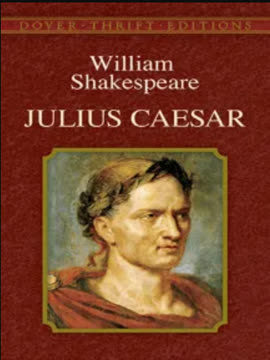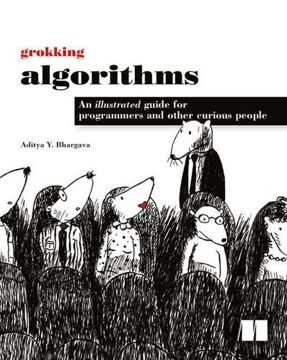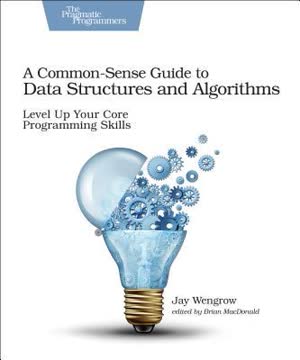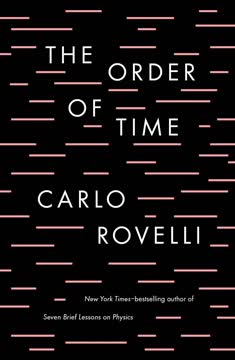Key Takeaways
1. Pointers are Essential for Dynamic Memory and Flexibility in C
Central to the language are pointers that provide much of the flexibility and power found in the language.
Core of C. Pointers are fundamental to C, providing the mechanisms for dynamic memory allocation, efficient data structure implementation, and direct hardware access. They allow programs to manipulate memory addresses, enabling dynamic behavior that static variables cannot achieve. Without pointers, C would lack the flexibility needed for complex systems programming.
Dynamic memory. Pointers are essential for dynamic memory allocation, allowing programs to request memory during runtime. This is crucial for creating data structures that can grow or shrink as needed, such as linked lists or trees. The malloc and free functions, cornerstones of C, rely on pointers to manage this dynamic memory.
Flexibility and power. Pointers provide a level of control and flexibility unmatched by many other languages. They enable direct manipulation of memory, allowing for highly optimized code and the ability to interact with hardware directly. This power, however, comes with the responsibility of careful memory management to avoid errors like memory leaks and segmentation faults.
2. Understanding Memory Management is Key to Mastering Pointers
The stack and heap are areas of memory used to support functions and dynamic memory allocation, respectively.
Memory regions. C programs operate within three primary memory regions: static/global, automatic, and dynamic. Static/global memory holds variables declared outside functions, existing for the program's lifetime. Automatic memory, managed on the stack, is allocated for local variables within functions. Dynamic memory, allocated from the heap, provides flexibility but requires manual management.
Stack and heap. The stack supports function calls and local variables, while the heap manages dynamic memory allocation. Understanding how these regions work is crucial for effective pointer use. Stack frames are created and destroyed with function calls, while heap memory persists until explicitly freed.
Memory models. Memory models, ranging from simple linear representations to complex diagrams, help visualize memory organization. These models clarify concepts like passing by value and passing by pointer, and illustrate the state of the program stack and heap. Visualizing memory helps bridge the gap between static code and dynamic program behavior.
3. Pointers Enable Efficient Function Interactions
Functions provide the building blocks for an application’s code.
Function building blocks. Functions are the fundamental building blocks of C applications, and pointers play a crucial role in how functions interact with data. Pointers allow functions to modify data directly, pass large data structures efficiently, and implement dynamic behavior. Understanding how to pass and return pointers is essential for effective C programming.
Passing data. Pointers enable functions to modify data outside their scope. Passing a pointer to a variable allows the function to directly alter the original data, avoiding the overhead of copying large structures. This is particularly useful when working with complex data types or when modifying data is a primary goal.
Returning data. Functions can return pointers to dynamically allocated memory, allowing them to create and pass back complex data structures. However, this requires careful memory management to avoid leaks. The caller becomes responsible for freeing the allocated memory, ensuring that resources are properly released.
4. Arrays and Pointers are Intertwined but Distinct
While array notation and pointer notation are not completely interchangeable, they are closely related.
Close relationship. Arrays and pointers are deeply intertwined in C, often used interchangeably in many contexts. An array name, when used alone, decays into a pointer to the first element of the array. This allows pointer arithmetic to be used to access array elements, providing a flexible way to manipulate data.
Not identical. Despite their close relationship, arrays and pointers are not identical. An array name is not a variable and cannot be reassigned, while a pointer is a variable that can be modified to point to different memory locations. This distinction is crucial for understanding how arrays and pointers behave in different situations.
Dynamic arrays. Pointers are essential for creating dynamic arrays, which can be resized during runtime. Functions like malloc and realloc return pointers to dynamically allocated memory, allowing programs to create arrays of variable sizes. This flexibility is crucial for handling data of unknown or changing size.
5. Strings in C Rely Heavily on Pointers
Strings are an important component of many applications.
String fundamentals. Strings in C are sequences of characters terminated by a null character (\0). They are typically stored in arrays or dynamically allocated memory, and pointers are essential for manipulating them. Understanding how strings are declared, initialized, and manipulated with pointers is crucial for C programming.
String literals. String literals are sequences of characters enclosed in double quotes. They are often stored in a string literal pool, a memory area that holds unique string literals to conserve space. Pointers are used to reference these literals, allowing programs to efficiently access and manipulate string data.
String operations. Common string operations, such as copying, comparing, and concatenating, rely heavily on pointers. Functions like strcpy, strcmp, and strcat use pointers to traverse and manipulate strings, providing powerful tools for text processing. However, these functions must be used carefully to avoid buffer overflows and other security vulnerabilities.
6. Structures and Pointers Facilitate Complex Data Structures
Structures provide a very useful way of ordering and manipulating data.
Data organization. Structures in C allow programmers to group related data items together, creating complex data types. Pointers enhance the utility of structures by enabling dynamic memory allocation and the creation of linked data structures. Understanding how to use pointers with structures is essential for building sophisticated applications.
Dynamic structures. Pointers allow structures to be dynamically allocated and linked together, forming data structures like linked lists, trees, and graphs. This dynamic allocation enables programs to create data structures that can grow or shrink as needed, adapting to changing data requirements.
Data structures. Linked lists, queues, stacks, and trees are common data structures that rely on pointers to connect nodes and manage data. Pointers provide the flexibility needed to create and manipulate these structures, enabling efficient data storage and retrieval. Function pointers can be incorporated to make these data structures more generic.
7. Secure Pointer Usage is Critical for Application Reliability
As powerful and useful as pointers can be, they are also the source of many security problems.
Security risks. Pointers, while powerful, are also a major source of security vulnerabilities in C programs. Improper pointer usage can lead to buffer overflows, memory leaks, and other errors that can be exploited by attackers. Writing secure C code requires careful attention to pointer management and a thorough understanding of potential security risks.
Buffer overflows. Buffer overflows occur when a program writes data beyond the allocated boundaries of a buffer. This can overwrite adjacent memory, corrupting data or even allowing attackers to inject malicious code. Careful bounds checking and the use of safer string functions can help prevent buffer overflows.
Memory leaks. Memory leaks occur when dynamically allocated memory is not properly freed, leading to a gradual depletion of system resources. This can cause programs to slow down or even crash. Careful memory management and the use of tools like memory leak detectors can help prevent memory leaks.
8. Advanced Pointer Techniques Enhance C Programming Capabilities
This book is intended to provide a more in-depth discussion of the use of pointers than is found in other books.
Advanced techniques. Beyond basic pointer usage, C offers advanced techniques that can enhance programming capabilities. These include casting pointers, using the restrict keyword, and employing object-oriented techniques. Mastering these techniques can lead to more efficient, flexible, and maintainable code.
Casting and aliasing. Casting pointers allows for type conversions and direct memory manipulation. However, it must be used carefully to avoid undefined behavior. Aliasing, where multiple pointers reference the same memory location, can also lead to unexpected results. The restrict keyword can help optimize code by informing the compiler that pointers are not aliased.
Object-oriented C. While C is not an object-oriented language, it is possible to simulate object-oriented concepts using pointers. Opaque pointers can be used to encapsulate data, hiding implementation details from users. Function pointers can be used to implement polymorphism, allowing for dynamic behavior based on the type of object being manipulated.
Last updated:
FAQ
1. What is "Understanding and Using C Pointers" by Richard Reese about?
- In-depth focus on pointers: The book provides a comprehensive and focused exploration of pointers in the C programming language, going beyond the basic coverage found in most C books.
- Memory management emphasis: It delves deeply into memory management concepts, including the stack, heap, and dynamic memory allocation, which are essential for mastering pointers.
- Practical examples and models: Richard Reese uses practical code examples and memory models to illustrate how pointers work in real-world scenarios.
- Coverage of advanced topics: The book also addresses advanced pointer topics such as function pointers, pointer arithmetic, security issues, and object-oriented techniques in C.
2. Why should I read "Understanding and Using C Pointers" by Richard Reese?
- Bridges knowledge gaps: The book fills in gaps left by general C programming books, offering a detailed understanding of pointers and memory management.
- Improves programming skills: Mastery of pointers is crucial for writing efficient, secure, and robust C code, and this book provides the tools to achieve that.
- Relevant for multiple backgrounds: Whether you are a beginner, an experienced C/C++ programmer, or coming from Java/C#, the book enhances your understanding of how memory and pointers work "under the hood."
- Security and reliability focus: It addresses common pointer-related bugs and security vulnerabilities, helping you write safer code.
3. What are the key takeaways from "Understanding and Using C Pointers"?
- Pointers are central to C: Understanding pointers is essential for effective C programming, especially for dynamic memory management and data structures.
- Memory regions matter: The book clarifies the differences between static/global, automatic (stack), and dynamic (heap) memory, and how pointers interact with each.
- Common pitfalls and best practices: It highlights frequent pointer mistakes (like dangling pointers, memory leaks, and buffer overflows) and offers strategies to avoid them.
- Advanced pointer usage: Readers gain practical knowledge of function pointers, pointer arithmetic, and using pointers for object-oriented and multithreaded programming in C.
4. How does Richard Reese define and explain pointers in C?
- Pointer as address holder: A pointer is defined as a variable that stores the address of another variable, object, or function in memory.
- Type-specific pointers: Pointers are usually declared with a specific type, but the type is for compiler checks; the pointer itself only holds an address.
- Pointer declaration syntax: The book explains pointer declaration syntax, the use of the asterisk (*), and recommends reading complex declarations backward for clarity.
- Initialization and null pointers: Reese emphasizes the importance of initializing pointers, the concept of NULL, and the difference between uninitialized and null pointers.
5. What are the main types of memory in C, and how do pointers interact with them?
- Static/Global memory: Used for statically declared and global variables, allocated at program start and deallocated at termination; pointers can reference these variables.
- Automatic (stack) memory: Local variables within functions are allocated on the stack; pointers can reference them, but become dangling if the function returns.
- Dynamic (heap) memory: Allocated and freed at runtime using functions like malloc and free; pointers are essential for managing and accessing this memory.
- Lifetime and scope: The book details how the lifetime and scope of variables in each memory region affect pointer validity and program behavior.
6. How does "Understanding and Using C Pointers" cover dynamic memory management?
- Manual allocation and deallocation: The book explains how to use malloc, calloc, realloc, and free for dynamic memory management.
- Memory leaks and dangling pointers: It discusses common problems like memory leaks (losing the address of allocated memory) and dangling pointers (using freed memory).
- Best practices: Reese recommends always freeing allocated memory, checking for NULL after allocation, and setting pointers to NULL after freeing.
- Advanced techniques: The book introduces nonstandard techniques like garbage collection, RAII (Resource Acquisition Is Initialization), and exception handling for memory management.
7. What are the key pointer operations and arithmetic explained in the book?
- Dereferencing and address-of: The book covers the use of the dereference (*) and address-of (&) operators for accessing and assigning memory addresses.
- Pointer arithmetic: It explains how adding or subtracting integers from pointers moves them by multiples of the pointed-to type's size, and how to subtract pointers to find distances.
- Pointer comparisons: Reese details how to compare pointers for equality, inequality, and relative ordering, especially within arrays.
- Pointer to void and casting: The book discusses the use of void pointers for generic programming and the importance of proper casting between pointer types.
8. How does Richard Reese address arrays, strings, and their relationship with pointers?
- Array-pointer relationship: The book clarifies that while array names can decay to pointers, arrays and pointers are not the same and have different behaviors in assignments and sizeof operations.
- Passing arrays to functions: It explains how arrays are passed as pointers, the need to pass array sizes, and the differences between one-dimensional and multidimensional arrays.
- Strings as char arrays: Strings in C are arrays of char terminated by a NUL character; pointers are used extensively for string manipulation and dynamic allocation.
- Common string operations: The book covers safe string handling, copying, concatenation, and the risks of buffer overflows with standard library functions.
9. What advanced pointer concepts are covered, such as function pointers and multiple indirection?
- Function pointers: The book provides detailed explanations and examples of declaring, assigning, and using pointers to functions, including arrays of function pointers and callbacks.
- Multiple levels of indirection: It covers pointers to pointers (double pointers), their use in functions (e.g., modifying a pointer argument), and in managing complex data structures.
- Returning pointers from functions: Reese discusses safe and unsafe practices for returning pointers, especially the dangers of returning pointers to local (stack) variables.
- Polymorphism and object-oriented techniques: The book demonstrates how to simulate object-oriented behavior in C using function pointers and opaque pointers.
10. How does "Understanding and Using C Pointers" address security issues and common pointer mistakes?
- Buffer overflows: The book explains how improper pointer and array usage can lead to buffer overflows, a major source of security vulnerabilities.
- Dangling and wild pointers: It details the dangers of using uninitialized or freed pointers, and how to avoid these issues.
- Double free and memory leaks: Reese discusses the risks of freeing memory twice and losing track of allocated memory, and how to prevent such bugs.
- Safer coding practices: The book recommends using assert, static analysis tools, and careful pointer initialization and deallocation to write more secure C code.
11. What are some best practices and advice from Richard Reese for working with pointers in C?
- Always initialize pointers: Uninitialized pointers can cause unpredictable behavior; initialize to NULL or a valid address.
- Check allocation results: After malloc or similar calls, always check if the returned pointer is NULL before use.
- Free memory responsibly: Match every allocation with a corresponding free, and set pointers to NULL after freeing to avoid dangling references.
- Use const and restrict: Use const for pointers to data that should not be modified, and restrict to help the compiler optimize and prevent aliasing issues.
12. What are the best quotes from "Understanding and Using C Pointers" by Richard Reese, and what do they mean?
- "Pointers are complex enough to deserve more in-depth treatment." — Emphasizes the centrality and complexity of pointers in C, justifying the book's focused approach.
- "A solid understanding of pointers and the ability to effectively use them separates a novice C programmer from a more experienced one." — Highlights that pointer mastery is a key milestone in C programming expertise.
- "There is nothing inherent to a pointer’s implementation that suggests what type of data it is referencing or whether its contents are valid." — Reminds readers that pointers are just addresses; type safety and validity are up to the programmer and compiler.
- "The power and flexibility of pointers is exemplified when used to create and support data structures." — Underlines how pointers enable dynamic, efficient, and flexible data structures in C.
- "Improper use of pointers is often at the root of many security problems." — Stresses the importance of careful pointer management for writing secure and reliable C programs.
Review Summary
Understanding and Using C Pointers receives high praise for its clear explanations of a typically challenging topic. Readers appreciate its concise yet comprehensive coverage, from basics to advanced concepts. Many found it invaluable for learning or reviewing pointer usage in C. The book is lauded for its approachability, practical examples, and security considerations. While some criticize certain examples and errata, most reviewers consider it an excellent resource for both beginners and experienced programmers seeking to deepen their understanding of C pointers and memory management.
Similar Books
Download PDF
Download EPUB
.epub digital book format is ideal for reading ebooks on phones, tablets, and e-readers.











